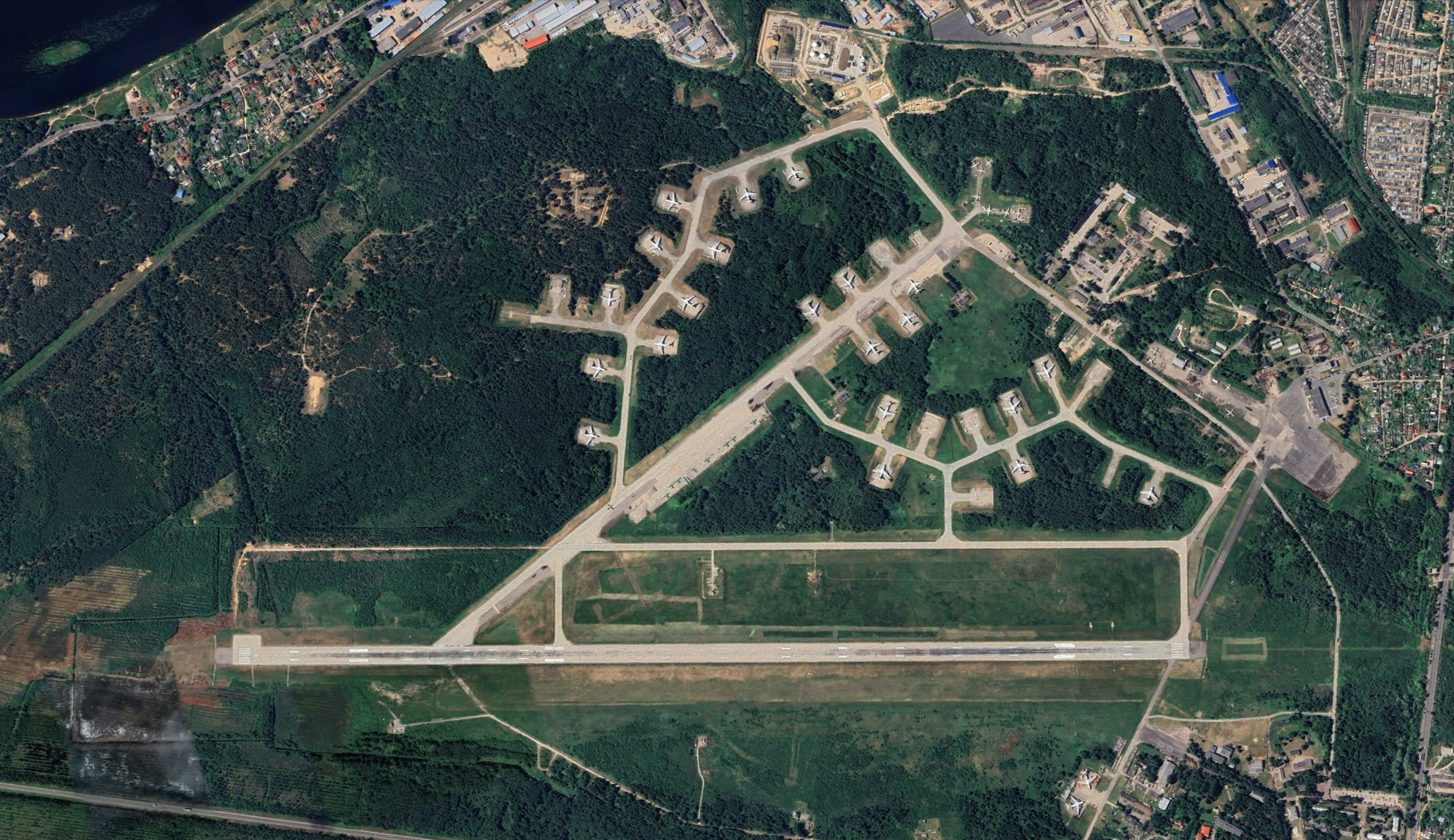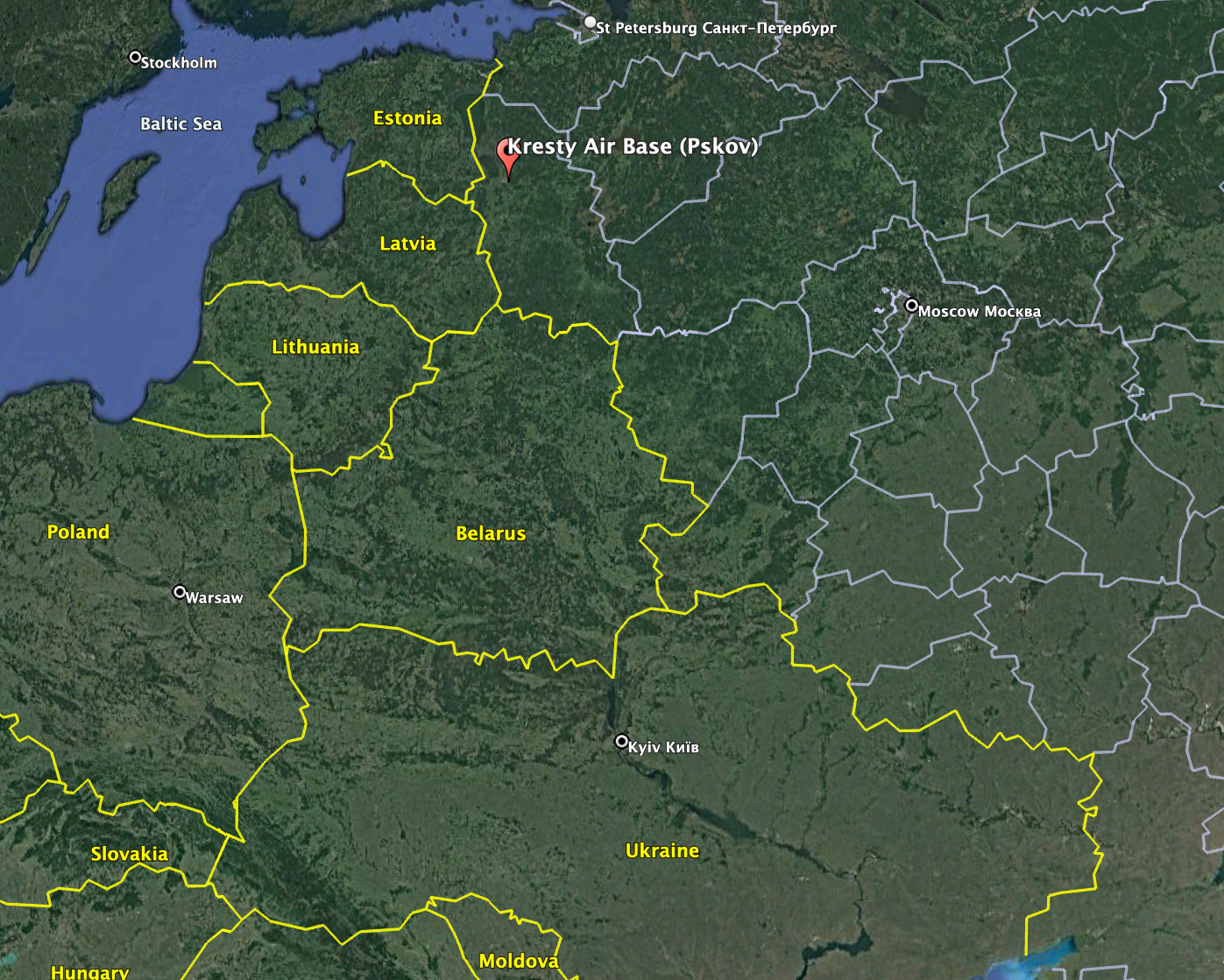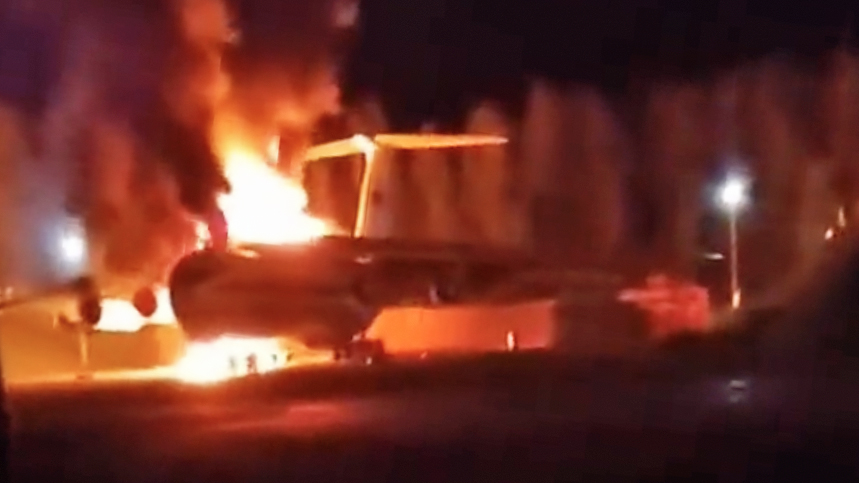In the latest installment of Ukraine’s campaign of drone strikes against Russian airbases, four Il-76 Candid heavy cargo aircraft were reportedly left damaged last night at an airfield in the far northwest of the country. Footage of the aftermath of the incident shows one of the airlifters burning fiercely on the tarmac as well as multiple other fires in the vicinity of the airbase. Unconfirmed reports suggest that up to 20 drones may have targeted the base, as part of a large-scale and complex series of drone attacks across Russia.
Kresty Air Base, in Pskov Oblast, came under drone attack last night, according to Russian sources, with the first reports appearing shortly before midnight. Quoting emergency services in its initial reporting, Russia’s state-run TASS news agency said that four Il-76s had been damaged, two of which had caught fire. A subsequent report from the RIA news agency also described two of the planes catching fire.
There have also been unconfirmed claims that a Tu-22M3 Backfire bomber was also hit in the raid on Kresty.
The regional governor of the Pskov Oblast, Mikhail Vedernikov, confirmed that the base had been struck, uploading a video showing a large fire, and with the sound of an explosion.
“The defense ministry is repelling a drone attack on Pskov’s airport,” Vedernikov said on Telegram. The governor said that he was at the scene of the attack and that, according to preliminary information, there were no victims.
The airbase is home to the 334th Military Transport Aviation Regiment — or 334 VTAP in its Russian abbreviation — which has been operating the Il-76 from here since 1979. The base is thought to operate up to around 20 Il-76s. If claims that four of the transports were damaged are accurate, that would represent a significant portion of the resident fleet.

As for the Il-76, this medium/long-range military transport is the most important of its type in the Russian Aerospace Forces and has been used in the war in Ukraine, primarily in rear areas.
In its primary Il-76MD version, it carries more than 105,800 pounds of cargo in a pressurized freight hold. The cargo compartment seats 167 troops or 245 with a second deck installed, or 126 paratroopers. Military equipment can be airdropped from high or low altitudes.

Co-located with the military airbase is Pskov Airport, serving commercial flights. The airport’s operator has stated that “all flights” from the facility for August 30 have been canceled, with NOTAM information provided by the airport blaming this on “technical reasons.”
Located more than 370 miles away from the closest Ukrainian territory, Kresty Air Base is far closer to the Russian border with Estonia. However, Pskov Oblast has come under drone attack before, and the airbase is clearly now within reach of these kinds of standoff Ukrainian attacks. There is also the possibility of localized operations by partisans or Ukrainian operatives that less specialized drones launched from close by for attacks on critical locations.

As is typical for these kinds of operations within Russia, Ukraine has not said it was involved in the Kresty attack.
However, Kyiv did claim that four Russian aircraft had been destroyed in Pskov, without commenting on the nature of the incident. “Yes, four Il-76 transport planes were destroyed in Pskov at an airfield, they are beyond repair, Andriy Yusov, a spokesman for Ukraine’s GUR military agency, told Reuters. Also, several others of those [aircraft] are damaged, but the information is being checked.”
Furthermore, Ukraine’s President Volodymyr Zelensky has said in the past that attacks on Russian territory are an “inevitable, natural, and absolutely fair process” as the war with Russia continues.
There’s no doubt, meanwhile, that Kyiv has stepped up its use of drones to attack targets inside Russia, including those deep within its borders.
On August 19, for example, at least one Tu-22M3 bomber was destroyed in a Ukrainian drone attack on Soltsy-2 Air Base in Russia, near St Petersburg. Satellite imagery The War Zone obtained from Planet Labs shows the aftermath of that attack.
Also overnight, the Russian Ministry of Defense reported explosions in Tula and Bryansk, both inside Russia, reportedly due to Ukrainian drones. The same source said that drones had been shot down over the Oryol, Bryansk, Ryazan, and Kaluga regions, as well as the region surrounding the Russian capital.
Another wave of drone attacks against the Russian capital was reported, too, with the AP news agency stating that airspace above Moscow’s three main airports — Sheremetyevo, Vnukovo, and Domodedovo — had been temporarily closed. This measure is typically taken in response to drone attacks in the capital region.
Russia’s foreign ministry said today that the latest Ukrainian drone strikes on Russian territory overnight “will not go unpunished”, Reuters reports.
In a briefing to journalists, foreign ministry spokesperson Maria Zakharova said that the drones would not have been able to fly such long distances without intelligence provided by Western countries.
While the Russian Ministry of Defense frequently makes claims of having thwarted Ukrainian drone attacks using its air defenses, as well as electronic warfare measures, it’s clear that enough of these drones are getting through and causing significant damage to military installations and equipment, as well as other infrastructure.
This is a developing story. Stay with The War Zone for updates.
Contact the author: thomas@thedrive.com
